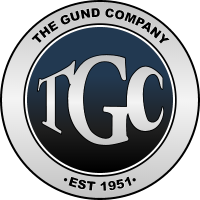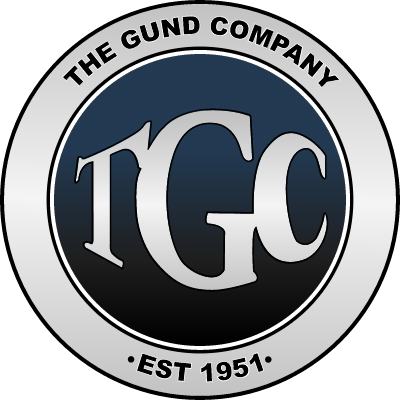Fabrication & Converting
THE GUND COMPANY IS A VERTICALLY-INTEGRATED MANUFACTURER AND FABRICATOR OF ENGINEERED FLEXIBLE MATERIAL SOLUTIONS.
In addition to our comprehensive material offerings, we also offer a variety of fabrication and converting services.
Once our materials specialists assist you with material selection, our application engineers can help you complete your component design by tapping into our full range of fabrication and converting capabilities. Our CNC machining and converting capability includes mills, routers, punches, saws, drills, brakes, waterjet, lathes, cutting, and more. The Gund Company also builds custom fabrication equipment to meet the requirements of the most demanding customer applications.
FLEXIBLE MATERIAL CONVERTING TECHNIQUES
Times are tough in today’s economy with increased inflation and labor costs; optimizing your fabrication and converting techniques can give you a competitive advantage over the competition. Often, the converting method and the efficiency of the process determines whether a project is won. The good news is that we can help!
The Gund Company offers a wide array of converting services to meet and realize your most complex design challenges. Our engineering team will use our expertise in converting techniques and flexible materials to provide you with high-quality and streamlined solutions from start to finish.
Converting Methods
All processing methods have advantages and disadvantages, depending on the application. Of course, new technology may improve the efficiency of a process in some capacity, but the essential function of the method remains the same in the following techniques:
Die-Cutting
Perhaps the most economical of all converting options is die-cutting. A part can be die-cut in several ways, but flatbed and rotary die-cutting are the most common.
Flatbed die-cutting is the simplest method. For high-volume parts that use large amounts of material, flatbed die-cutting can be done quickly. This method can cut virtually any material, so flatbed die-cutting is extremely versatile. Completely flat pieces used for dielectric spacers would be an example of a part produced using die-cutting.
Rotary die-cutting can also combine processes to reduce set-up costs and improve efficiency. However, due to the high accuracy and combination of techniques, tooling costs in rotary die-cutting are often more than tooling in flatbed die-cutting. For high accuracy and high-volume production, rotary die-cutting is a great solution.
Waterjet and Laser Cutting
A waterjet utilizes a high-pressure stream of water to cut a narrow line in a material. Similarly, a laser cutter uses a laser to slice through a material in a narrow line. These processes require virtually no tooling costs, which can help with prototypes or quick turnaround parts. Traditionally these methods have not been as fast as die-cutting, so for high volume production, the tooling costs associated with die-cutting may be a lower-cost option long-term.
Heat-Forming and Thermoforming
Heat forming and thermoforming refer to transforming a flat plastic sheet into a shape using heat and pressure. Once the material is heated to a temperature high enough to allow forming, pressure is applied to form around a shape or mold. And so, complex 3D shapes are achievable by these methods. Heat forming can form around a mold by manual pressure, but thermoforming often uses a vacuum to provide pressure from suction to the heated plastic material. Battery components such as battery covers, chassis liners, and phase barriers are often formed by these methods. Unlike waterjet, or laser-cutting, tooling charges vary depending on size, complexity, temperature requirements, and reusability.
Knife-Cutting and Machining
Knife-cutting and machining use blades, bits, punches, or other tools to cut through a material to form a particular shape. Usually, there is a tooling charge associated with maintenance of the cutting tools, which can vary depending on the type, size, machine, material, and other factors.
| Comparison Chart | ||||||
|---|---|---|---|---|---|---|
Die Cutting | Waterjet / Laser | Heat Forming | Thermoforming | Knife Cutting | Machining | |
Tooling Cost | $ | — | $$ | $$ | $ | $ – $$$ |
Set-Up Time | Short | Moderate | Long | Long | Moderate | Moderate |
Production Speed | Very Fast | Moderate | Slow | Slow | Fast | Moderate |
Product Complexity | Simple | Simple | Moderate | Complex | Simple | Moderate |
Our dynamic production-scheduling system and industry-leading responsiveness to customer requests allow us to optimize production scheduling to ensure our customers have their critical parts when they need them.
If you need fast turnaround on a custom component or prototype, please contact an application engineering specialist today!
Please contact us today if we can help answer material property questions or provide an application-specific quote. Thank you for the opportunity to earn your business.

